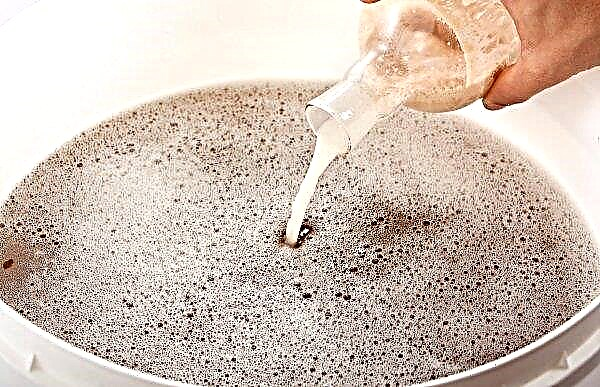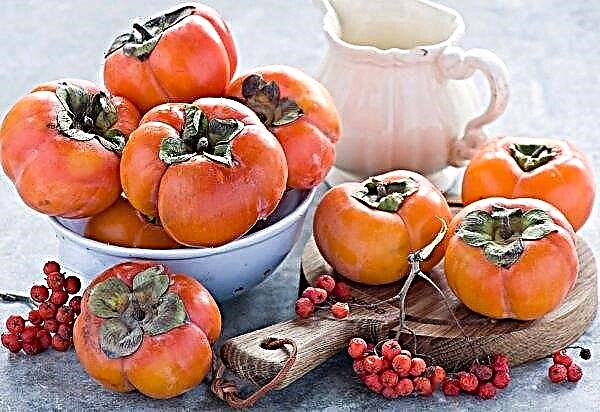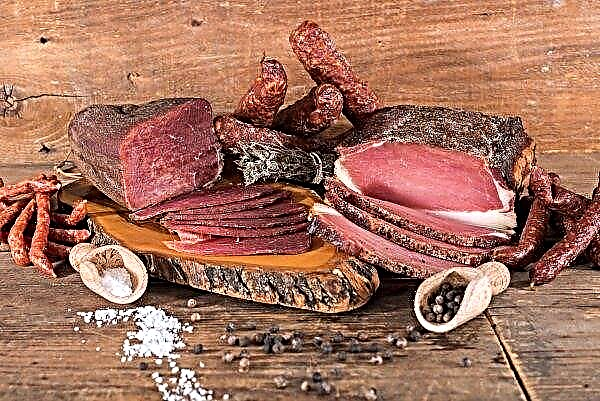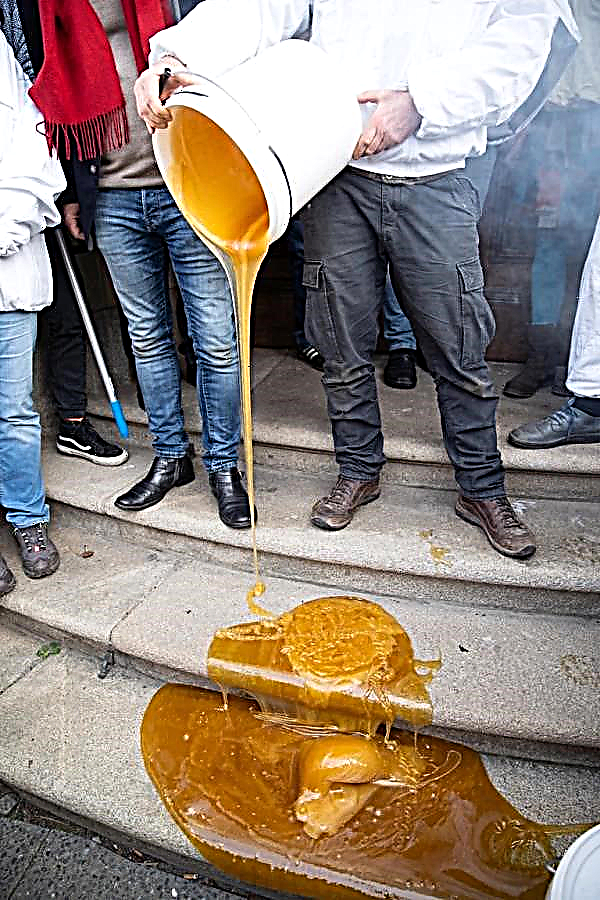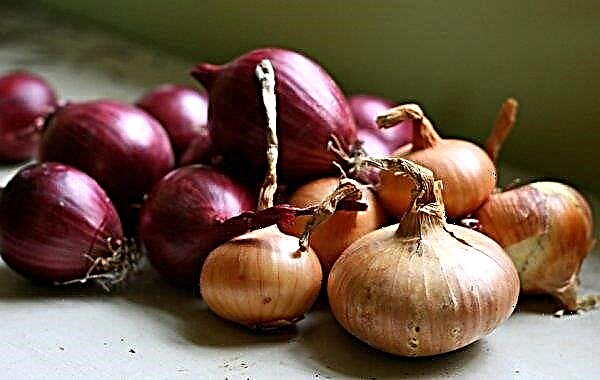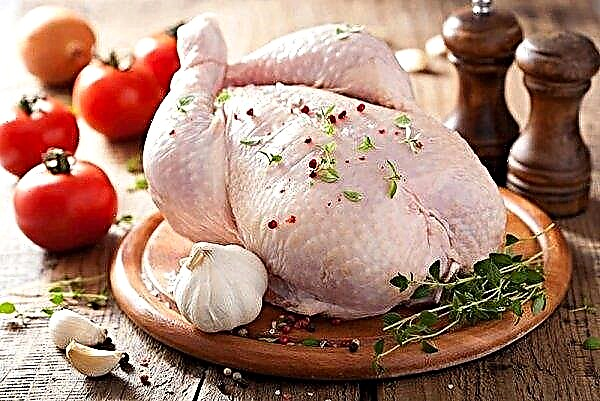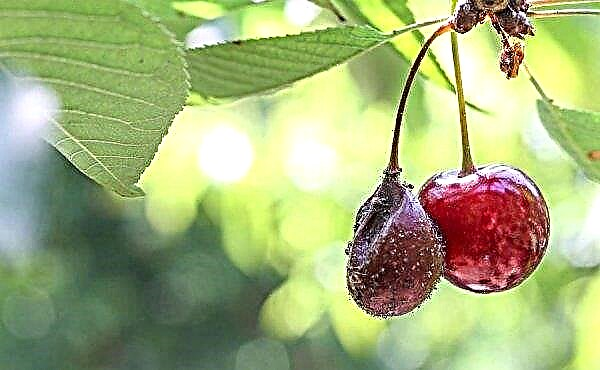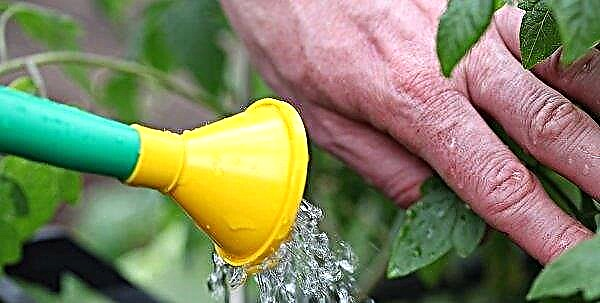The tropical guest, whose homeland is the forests of South Africa, has an unusual name - clivia. Today it can be found at flower growers of all countries: this plant is a favorite because of its flowering. About clivia and the characteristics of its cultivation and reproduction will be discussed in our article.
Botanical description of the plant
Clivia, or, as it is also called, Kaffir lily is a perennial that differs from the rest of the Amaryllis by the absence of a bulb. Its root is a cross between the bulb and the rhizome, more similar in appearance to the latter. Tightly adjacent leaves that are opposite each other form a small shoot (false stem). The number of leaves increases by 5–6 annually. From the center of this outlet in late February - early March, a ribbed peduncle appears. Its top is decorated with about 20-30 buds forming an umbrella inflorescence.
Flowers, like bells, bloom gradually. The flavor of clivia resembles a mixture of vanilla, rose and nutmeg. Flowering ends with the formation of the fruit - a fleshy red berry. A plant can delight with its flowering annually up to 40 years.
| Root system | Juicy rhizome with fleshy roots |
| Stem | Missing |
| Leaf shape | Narrow, xiphoid |
| Leaf color | Dark green |
| Flower shape | Bell-shaped, form an inflorescence umbrella |
| Flower color | Yellow, orange, cream, red |
| Fruit shape | Round berry |
| Fruit color | Orange red |
Main types
To date, these types of Kaffir lilies are known:
- noble or beautiful clivia - was the first species introduced to Europe. This is a low (30 cm) bush with xiphoid, up to 40 cm long, leaves of saturated green color. The top of a thick peduncle is decorated with an inflorescence of 40-60 small tubular flowers and a curved perianth. Petals are painted yellowish-orange or light red in color with green tops;
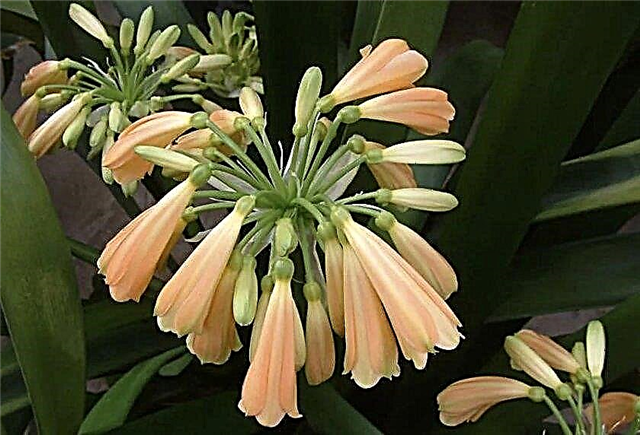
- cinnabar (orange, or miniature) - the most common and favorite in floriculture. At home in South Africa, it grows everywhere: from the coast to the mountains. It can be found even at an altitude of 800 m above sea level. Plant height - up to 0.5 m, leaves taper from the base to the ends, have a xiphoid shape. The inflorescence contains 10–20 flowers of red (orange) color with a yellow middle. There is also a garden form, the leaves of which have yellow or white longitudinal stripes;

- clivia citrine - It is considered a variety of cinnabar clivia. Her flowers have creamy yellow coloring and yellow fruits;
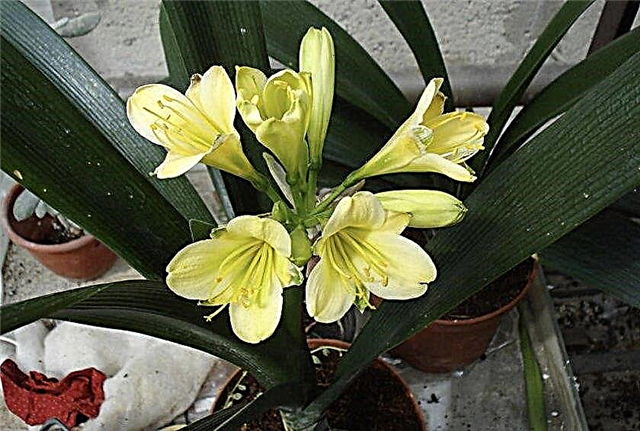
- clivia gardena - named after the major who discovered it. Prefers shaded places. It, unlike other species, has lighter foliage cut in the lower part and forming the likeness of a tuft. The flower stalk is crowned with 10-15 tubular flowers. Indoor use rarely used;

- clivia stem - in nature, lives on rocky ground and even on trees. It has a large size and an unusual stem formed from dried lower foliage with aerial roots. The length of the stem reaches 1-3 meters in height. Long peduncle is crowned with 10 to 20 orange-red buds. A plant can form several peduncles at the same time. It is preferable to keep in greenhouses;

- clivia is amazing differs from its relatives by endurance. It withstands forty-degree heat and slight frosts. Also its distinctive feature is maroon leaves at the bottom, with a white stripe in the center.

Did you know? African peoples use clivia for snakebites, fever, and to accelerate labor. We have all the parts of the plant also they are used for medicinal purposes, but since the substance contained in it is toxic, it is necessary to be careful.
House growing conditions
Clivia is not a very capricious plant, but it also has some requirements.
Lighting and ventilation
It is best to keep the plant on windows that are not exposed to direct sunlight. The flower prefers diffuse lighting, but it should be enough, otherwise the flowering will be weak, and the flowers will be small. In summer, the plant is taken out into the shaded place, and during the dormant period, it is nice to place the flower on the glassed balcony. During the growth of the flower arrow, during the flowering period, as well as in the heat of the window, it is periodically necessary to open the windows for ventilation, but it must be ensured that the plant does not stand in a draft.
Temperature and humidity
Kaffir Lily has some temperature requirements:
- during the phase of active development, the appropriate temperature for it would be + 20–25ºC;
- for the growth of the flower arrow you need about + 18–20 ° С;
- at rest - 12–14 ° С.
Home Care
Next, consider how to care for clivia, as well as what needs to be done to make it bloom.
Important! You should not disturb a flower without need: replanting, loosening, rearranging it is possible only when it is really necessary.
Watering
The plant does not welcome excessive waterlogging, so there are such rules:
- water if the surface layer of the soil is sufficiently dry;
- more frequent watering is needed during the growth of the flower arrow and its flowering;
- water should be warm, settled and better boiled. Warm water stimulates flowering processes;
- between waterings, the presence of water in the pan is not permissible - it must be drained, otherwise it will cause rotting of the roots;
- Clivia responds well to a warm shower.

Top dressing
Constant top dressing makes the flower even more beautiful: they begin to be applied after the appearance of the first flower arrow twice a month. It is preferable to alternately apply mineral and organic fertilizers. It is necessary to choose those dressings that are suitable for bulbous and flowering specimens. According to the recommendations of the florists, you should slightly reduce the concentration given in the instructions - it is better to underfeed than to overfeed. Fertilizers should be diluted with water during irrigation. It is also important to consider that nitrogen inhibits flowering, but improves foliage growth, and potassium stimulates the formation of buds.
Pruning
In case of yellowing of the ends of the leaves, they are cut directly along the edge, leaving a green leaf plate. The leaves are completely removed if they are completely yellowed. If you do not plan to grow clivia seeds, then after the plant fades, it is advisable to completely remove the peduncle. This will help preserve the nutrients, and not spend them on the formation of berries.
Transfer
The plant really does not like to be bothered, so when transplanting you need to be very careful and adhere to the following requirements:
Clivia has very delicate roots, so the slightest damage can cause decay. To prevent this, the wounds are sprinkled with crushed coal.Rest period
To regularly observe the lush flowering of Kaffir lily, she needs to arrange rest periods: it begins after flowering and lasts about 2-3 months. To make the flower rest, they stop watering and feeding it, and also rearrange it in a room with a temperature of + 12–14 ° С. If clivia intensively began to drop foliage, then it needs to be slightly watered.
Breeding
Kafra lily propagates vegetatively (by children) or seeds.
Kids
This is the simplest and fastest breeding method, which consists of the following steps:
- Young specimens are neatly separated from the mother plant. This is done after flowering, better when transplanted. Mandatory conditions are height (at least 15 cm), the number of leaves (at least 4 pairs) and their roots.
- Plants are placed in pots (diameter not more than 7 cm) with a mixture of leafy soil with sand.
- Provide moderate watering and a temperature of about + 17 ° C.
- Such instances bloom 2 or 3 years after planting.
 When working with Kaffir lily, you should remember that it is poisonous, so you need to wear gloves.
When working with Kaffir lily, you should remember that it is poisonous, so you need to wear gloves.Did you know? It is believed that people with the Sagittarius zodiac sign can protect themselves from depression and help restore vitality by acquiring clivia home.
Seeds
Seed cultivation is a longer and not always effective process. Spend it like this:
- in order to obtain seeds from clivia, pollination must occur (you can pollinate with the cross method);
- when the berry reaches maturity, seeds are extracted;
- seed material is placed in peat or sand at a distance of 2 cm from each other;
- in 5-6 months sprouts will appear. The grown plants are transferred to individual containers (diameter about 6–7 cm).

Possible growing difficulties
With the content of clivia, one may encounter some difficulties. Next, we’ll talk about how to solve these problems.
Does not bloom
With proper care, Kaffir lily should annually delight with its flowering. If this does not happen, then the reasons may be:
- insufficient rest period. It must be placed in a cool place and give the plant a good rest;
- high temperature content or lack of light. Ensure normal lighting and the right temperature;
- an excess of nitrogen. It is necessary to replace top dressing containing this element with potash;
- big pot. Until the root system fills the entire tank, the plant may not bloom. Do not plant clivia in a too spacious pot.
 An incentive for flowering is irrigation with warm water. When forming a peduncle, you should not change the conditions of detention, move or rearrange the flower - this can cause the buds to fall.
An incentive for flowering is irrigation with warm water. When forming a peduncle, you should not change the conditions of detention, move or rearrange the flower - this can cause the buds to fall.Disease
With an excess of moisture or stagnation of water, clivia is often affected by fungal diseases. Brown spots on the leaves indicate damage by gray rot. Later, root decay occurs. It is necessary to spray with "Topaz", "Champion" or Bordeaux fluid. If this does not help, you should use preparations containing copper (for example, vitriol). The plant is transplanted into new soil, having previously removed the damaged roots and sprinkled them with crushed coal.
Pests
Together with the soil, such pests dangerous to clivia can be introduced:
Signs and superstitions
Many superstitions and signs are associated with many plants - no exception and clivia:
- if you put a yellow coin in a flower pot, then this will help to improve the material condition;
- a sharp and unreasonable cessation of plentiful flowering promises problems or some kind of loss;
- unexpected drying is also fraught with great trouble;
- some are sure that clivia in the house causes quarrels, and in the bedroom - disturbing dreams or insomnia, while others - that the flower improves the vitality of others.
Important! Believe it or not, these beliefs — personal everyone’s businesshowever, clivia is actually poisonous and is especially dangerous for animals and children.
In our article, we tried to answer most of the common questions: how to transplant clivia at home, what to do with a flower stalk, when it has blossomed, as well as many others. We hope that our material has become not only interesting, but also useful for you.







